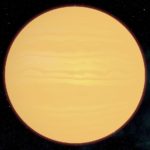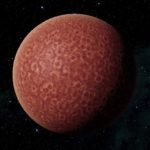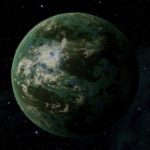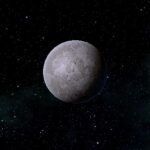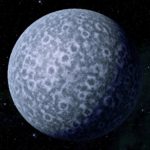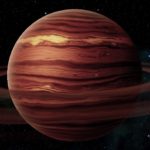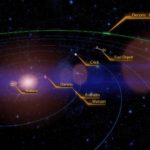System Specs:
- Stellar Mass: N/A Sol Masses
- Stellar Class: G
- Luminosity: N/A Sol
- Planets: 6
- Moons: 68
- Asteroid Belts: 0
- Asteroids: 0
- Objects: 2

Skepsis is a gateway system. It may be named for the plural form (Σκέψεις) of the Greek word “skepsi” (Σκέψη) which means thought. As such, it may also be referring to ‘skeptics’, as all of the planets within the system are named after notable scientists.
–
Planets Directory:
- Wallace
- Darwin
- Watson
- Crick
- Pauling
- fuel depot
- Keimowitz
- Mass Relay
–
Wallace:
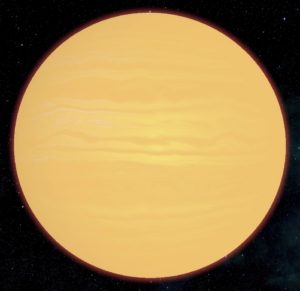
- Orbital Distance: 0.04 AU
- Orbital Period: 11 Earth-years
- Keplerian Ratio: N/A
- Radius: 39,459 km
- Day Length: 11 Earth-days
- Atmospheric Pressure: N/A atm
- Surface Temp: N/A °C
- Surface Gravity: N/A g
- Mass: N/A Earth-masses
An unusually small Pegasid or “hot Jupiter,” Wallace was originally an extrasolar planet that entered this system and was captured by the gravity well of the G-class star Skepsis. Tidally locked, Wallace’s “hot side” reaches temperatures over 2,500 degrees Celsius.
While not large enough proportionate to the star to cause eclipses visible from Watson, it is easily seen at dawn or dusk as one of the brightest objects in the sky.
–
Darwin:
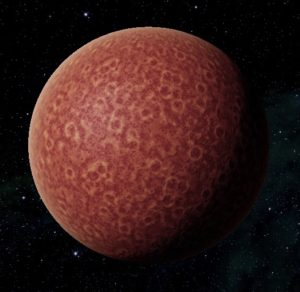
- Orbital Distance: 0.9 AU
- Orbital Period: 0.9 Earth-years
- Keplerian Ratio: 0.9
- Radius: 6,771 km
- Day Length: 37.3 Earth-hours
- Atmospheric Pressure: 112.06 atm
- Surface Temp: 710 °C
- Surface Gravity: 1.2 g
- Mass: 1.342 Earth-masses
A mid-sized rock planet, Darwin is ironically named, being one of the worst places for life in the galaxy. Its atmosphere is punishing, its temperature boiling, its chemical makeup toxic. Carbon monoxide and methane wrap the planet in an unyielding haze, and scans of its surface show only silicates and molten tin. Its daily thermal fluctuations lead to hurricane-level vortices, two at each pole, forming “eyes” that can be seen from orbit. Despite all this, Darwin is still used by spacers as a drive core discharge point — hydrogen pierces the clouds in the upper atmosphere, making for a relatively benign approach.
–
Watson:
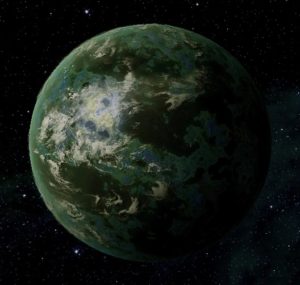
- Orbital Distance: 2.1 AU
- Orbital Period: 3.0 Earth-years
- Keplerian Ratio: 1.029
- Radius: 6,733 km
- Day Length: 37.8 Earth-hours
- Atmospheric Pressure: 0.6 atm
- Surface Temp: −18 °C (mean) 25 °C (habitable zone)
- Surface Gravity: 1.2 g
- Mass: 1.327 Earth-masses
- Colony: human
- Satellites: 1
Watson is known in human media for two things — its spectacular tides brought on by a large moon, and the bureaucratic snafu over which Earth nations got to settle there first. Watson is a garden world, first discovered in 2165 CE, with credit claimed by the Chinese People’s Federation, the United North American States, and the European Union. The Systems Alliance brokered the infamous “Rekjavik [sic] Compromise,” allowing limited colonization from each coalition in cities comprised of populations from each nation.
Watson itself trends colder than Earth, with a temperate zone measuring about 30 degrees latitude in either direction from the equator. Its life does not easily map to Earth’s evolutionary eras — some islands have species that resemble terrestrial placental mammals, others are overrun by arthropods. It is estimated that at least two more generations of xenozoologists will be needed to properly classify all the species of the planet.
–
Franklin:
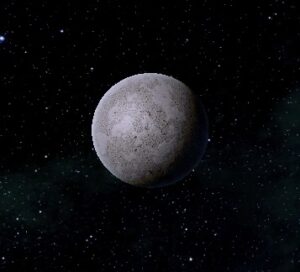
- Orbital Distance: 2.1 AU
- Orbital Period: N/A Earth-years
- Keplerian Ratio: N/A
- Radius: 2,405 km
- Day Length: 33 Earth-hours
- Atmospheric Pressure: Trace atm
- Surface Temp: −116 °C
- Surface Gravity: 0.1 g
- Mass: 0.014 Earth-masses
- Colony: human
A large moon, Franklin retains a trace atmosphere of carbon dioxide, but its desolate surface holds no signs of water or life. In order to defend Watson from the pirates of the Terminus Systems, Franklin is home to two Alliance spaceports and naval bases capable of fielding six fighter squadrons each and a classified number of interplanetary ballistic missiles. Mass effect fields keep the gravity in its installations at a comfortable level for long-term living.
–
Crick:
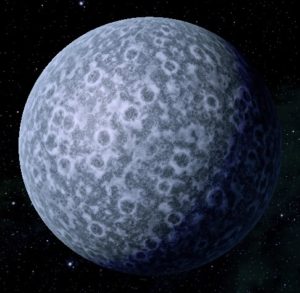
- Orbital Distance: 4.3 AU
- Orbital Period: 8.9 Earth-years
- Keplerian Ratio: 1.004
- Radius: 4,738 km
- Day Length: 60.7 Earth-hours
- Atmospheric Pressure: 2.77 atm
- Surface Temp: −32 °C
- Surface Gravity: 0.6 g
- Mass: 0.329 Earth-masses
Known for its spectacular geysers that can be seen from orbit, Crick is a rock planet with expansive frozen oceans. Though it is within the temperature and pressure range for human habitation, its thick atmosphere is largely carbon dioxide and monoxide, making breath masks or environmental suits mandatory. The most abundant resources for exploitation are the potassium salts found in its sea-beds, which fetch good prices on terraforming worlds.
–
Pauling:
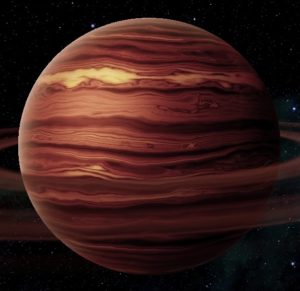
- Orbital Distance: 4.3 AU
- Orbital Period: 8.9 Earth-years
- Keplerian Ratio: 1.004
- Radius: 4,738 km
- Day Length: 60.7 Earth-hours
- Atmospheric Pressure: 2.77 atm
- Surface Temp: −32 °C
- Surface Gravity: 0.6 g
- Mass: 0.329 Earth-masses
- Satellites: 66
A hydrogen-methane gas giant, Pauling’s gravitational field is believed to have cleared most of what would otherwise have been a sizable asteroid belt. The 2163 mission of the space probe “Ultimate” gave the inhabitants of Watson reams of data reinforcing this theory, giving the colonist an accurate count of its moons (66), rings, moonlike ring objects, and more than 200 visible impact craters on its pockmarked surface. “Ultimate” has since been retrieved for re-use on subsequent missions within the solar system.
–
Keimowitz:

- Orbital Distance: 16.8 AU
- Orbital Period: 69.1 Earth-years
- Keplerian Ratio: 0.993
- Radius: 9,586 km
- Day Length: 29.7 Earth-hours
- Atmospheric Pressure: Trace atm
- Surface Temp: −190 °C
- Surface Gravity: 3.4 g
- Mass: 7.623 Earth-masses
- Satellites: 1
Named for the 21st century pioneer of groundwater remediation techniques, Keimowitz is an impressive layer of ice over a stony metallic core. Despite its size, it has only one moon, Noa, which shares its carbonaceous composition, leading astronomers to believe it formed following a giant impact. Iridium deposits have attracted miners to the planet, who must work through robots and telepresence because of the planet’s strong gravity.
–
–
video

